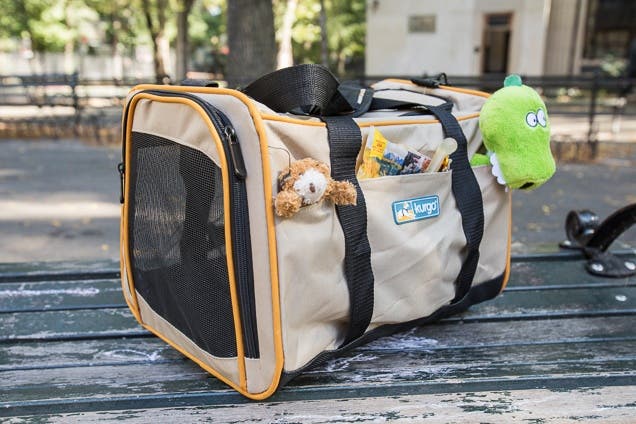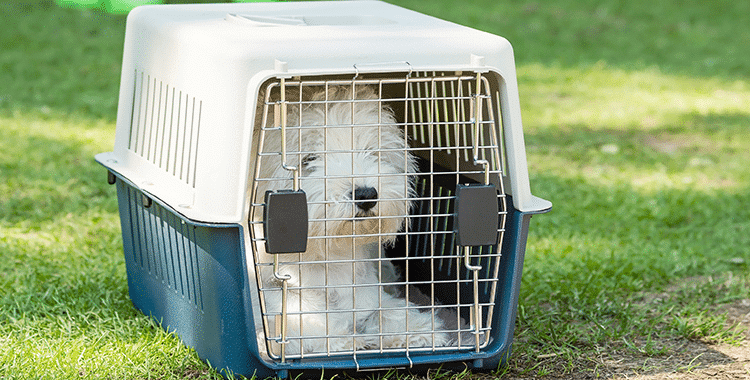Traveling with Pets: How to Pick the Best Dog Carrier
Whether you and your dog travel the world together or you just need something to transport him to the vet, a carrier is a handy addition to your canine supplies. Much like dog enclosures that keep your furry friend safe at home, it provides comfortable transportation for your pets.
Types of Travel Carriers

As much as it’s nice to take your furry friend on hikes and adventures, you should keep in mind that they don’t have the same stamina as you. While larger breeds may travel up to 30 kilometres, smaller dogs shouldn’t walk more than 10. But more importantly, you should consider their age and overall fitness levels. If you are eager to take your dog on an exciting adventure, that’s where dog carriers come into play. With so many options on the market today, how do you know which one is best for you and your dog?
Dog Backpack
Backpack carriers for dogs are portable and practical solutions for transporting your dog. They’re ideal for little to medium-sized canines that like to be involved in the activity. They may enjoy the sights and sounds of your trips from the dog backpack. Such backpacks are a wonderful choice since they allow you to carry not only your dog but their own water as well as other items that might be essential when going for long walks or hiking trips. With many partitions that can hold a laptop, two water bottles, and plenty of space for your dog to sit comfortably, the g train quality-made dog carriers are a great bargain for dogs weighing no more than 10kg.
Carrier Sling

A dog sling is another option for carrying your dog, but they are not as popular as backpacks. The majority of slings are composed of strong cloth that wraps around your pet’s belly and has handles towards the top for carrying him. These doggie slings are most commonly used with older dogs or dogs recovering from an injury that require aid getting around.
Most dog carrier slings make it simple to transport the canines since they feature two handles, similar to a grocery bag. They will, however, put a greater strain on a certain region of your body. For this reason, look for a model that has wide straps that distribute the weight evenly over your back to maximize comfort for both you and your dog.
An over-the-shoulder carrier should feature a harness and carrier loops, as well as a few bag compartments to suit some supplies you might need. This cross-body doggie sling spans from shoulder to hip and is made of strong, reinforced cloth. A dog sling is suited for smaller dogs and people who can easily carry weights of up to 7kg, however, most of them fit dogs weighing no more than 5 or 6 kg. They are ideal for Chihuahuas, Bichon Frises, Boston Terriers, and Chinese Cresteds.
Soft Carrier Bag
The mesh sides also allow your dog to view more of you and the environment around them, which should make vehicle journeys more comfortable for them. Because soft carriers are composed of soft fabrics, dogs may frequently gnaw or claw their way through the mesh panels, especially if they are excited or scared. If your dog happens to chew and scratch, then you should consider a more robust carrier or a travel crate.
Travel Crate

Dog travel cages or carriers give a secure, contained environment in which your dog may travel in comfort. These boxes differ from home crates in a number of ways, including means to secure your dog during transport, as well as useful features for pet owners. When it comes to selecting the best dog crate for travel, you need seriously think about the material it’s made of.
Each material has advantages and disadvantages and picking something sturdy and lightweight should be key. Metal crates are among the better options, especially if you want to use them in your vehicle. They are extremely sturdy and are even intended for dog training. They are pretty substantial and will fit snugly into the boot of your car or truck. They offer sufficient ventilation and are a good model for dogs that have a habit of escaping even the most secure cages.
Plastic crates are another choice because they are both durable and lightweight. They also come in a range of sizes, but they can typically fit inside any vehicle. A plastic crate has the advantage of being easy to clean, which is useful if you take your dog on muddy walks. Plastic cages feature openings through which your dog can see, but this limited view also gives your dog more seclusion and prevents unwanted distractions. Aside from providing safe car rides, plastic crates are usually airline-approved, whereas metal wire crates are not.
Next: Measure Your DogBut, before you go out and buy a carrier, you’ll need to measure and weigh your dog to ensure you get the right one. Choose a carrier that is large enough for your dog to stand up and turn around for both hard and soft dog carriers.
For hard carriers and travel crates, add 10 cm to the length measured from the tip of its snout to the base of its tail. Then, measure it from the top of its head to the ground and add the same amount. But if you are looking to buy wearable carriers, like a dog backpack or a sling carrier, your dog doesn’t require much more area to walk about. However, most of these bags will state a maximum carrying weight, so take that in mind as well.
